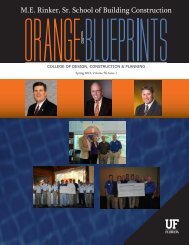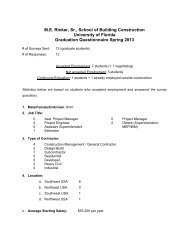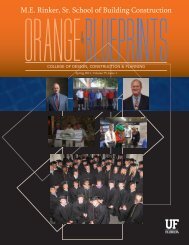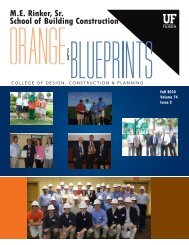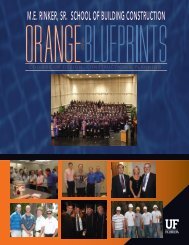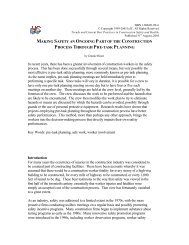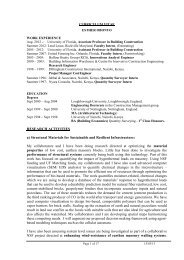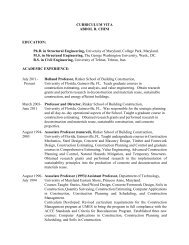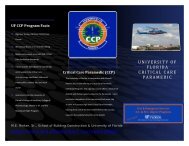Full Proposal in pdf - M E Rinker Sr School of Building Construction ...
Full Proposal in pdf - M E Rinker Sr School of Building Construction ...
Full Proposal in pdf - M E Rinker Sr School of Building Construction ...
Create successful ePaper yourself
Turn your PDF publications into a flip-book with our unique Google optimized e-Paper software.
Decision Model to Optimize Indoor Air Quality <strong>in</strong> Commercial Build<strong>in</strong>gsProject DescriptionPurpose <strong>of</strong> the ResearchThe purpose <strong>of</strong> this research is to develop a decision model for optimiz<strong>in</strong>g the control <strong>of</strong><strong>in</strong>door air pollutants <strong>in</strong> commercial build<strong>in</strong>gs. This research will help decision makersdeterm<strong>in</strong>e the optimum <strong>in</strong>door air management options <strong>in</strong> order to maximize the benefits<strong>of</strong> a better IAQ’s by us<strong>in</strong>g mathematical programm<strong>in</strong>g.Literature ReviewThe relation <strong>of</strong> human with build<strong>in</strong>gs is the essence <strong>of</strong> architecture and build<strong>in</strong>gconstruction. Fitch def<strong>in</strong>es the ultimate task <strong>of</strong> architecture as “to act <strong>in</strong> favor <strong>of</strong> humanbe<strong>in</strong>gs” (Fitch & Bobenhausen, 1999). The environmental management concepts,techniques and their <strong>in</strong>fluence on build<strong>in</strong>g design, construction, and themes have beenchang<strong>in</strong>g. Table 1 summarizes all the different build<strong>in</strong>g themes that have accompaniedthe major issues s<strong>in</strong>ce the 1960s.Table 1 Historical Quest for Build<strong>in</strong>g Reality (Fitch & Bobenhausen, 1999).Decade Issues Build<strong>in</strong>g theme1960sSense <strong>of</strong> coolness, heat<strong>in</strong>g,ventilation, <strong>in</strong>sulation,shad<strong>in</strong>gAir-condition<strong>in</strong>g systems1970s Energy crisis Energy-efficient build<strong>in</strong>gs1980s1990sTwenty first centuryApplication <strong>of</strong> computertechnology <strong>in</strong> build<strong>in</strong>gsConcern about the sickbuild<strong>in</strong>g syndrome.Global effort for susta<strong>in</strong>abledevelopmentIntelligent build<strong>in</strong>gsHealthy build<strong>in</strong>gsSusta<strong>in</strong>able build<strong>in</strong>gsIAQ <strong>of</strong> a space is determ<strong>in</strong>ed by the quality <strong>of</strong> air <strong>in</strong>take and also by other factors such asair condition<strong>in</strong>g, and room usage. Intake air is mostly provided by outdoor air and <strong>in</strong>some cases by re-circulat<strong>in</strong>g the exist<strong>in</strong>g air. However, re-circulated air should usually beavoided s<strong>in</strong>ce it may <strong>in</strong>crease the levels <strong>of</strong> pollutants. The system should be designedwith fresh air <strong>in</strong>take strategies whenever is possible. The reason fresh air <strong>in</strong>take should beused is that <strong>in</strong> many cases outside air will ensure a sufficient amount <strong>of</strong> air filtration.Natural ventilation can provide outside air as long as the energy efficiency <strong>of</strong> the build<strong>in</strong>gis kept at acceptable levels.The amount <strong>of</strong> <strong>in</strong>door air pollutants is correlated with different build<strong>in</strong>g conditions suchas the site, build<strong>in</strong>g materials, construction techniques and HVAC system. The follow<strong>in</strong>g





